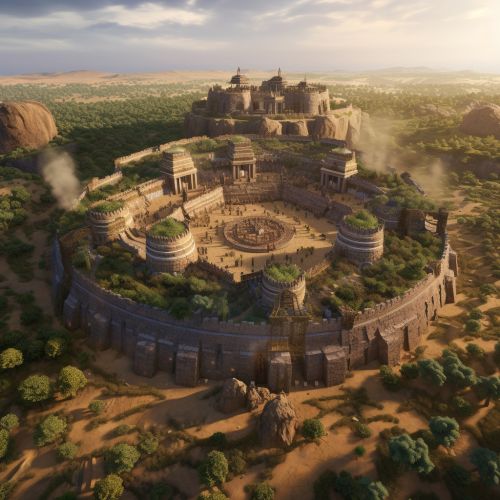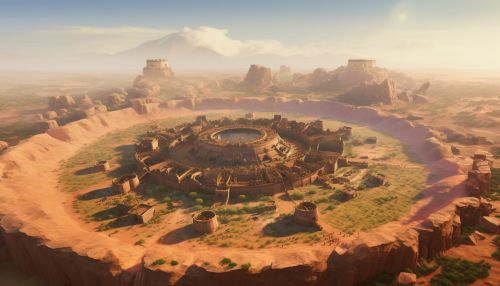Mississippian culture
Introduction
The Mississippian culture was a Native American civilization that flourished in what is now the Midwestern, Eastern, and Southeastern United States from approximately 800 CE to 1600 CE, varying regionally. It was composed of a series of urban settlements and satellite villages (suburbs) linked together by a loose trading network, the largest city being Cahokia, believed to be a major religious center.


Origins and Development
The origins of the Mississippian culture are believed to lie in a predecessor culture known as the Woodland culture, which had been present in the area from around 1000 BCE to 1000 CE. The Woodland culture was characterized by the construction of mounds and the creation of complex pottery designs, traits that would be further developed during the Mississippian period.
Social Structure
The Mississippian culture was characterized by a hierarchical social structure. At the top were the elite, who lived in the large central towns and who were believed to have been the political and religious leaders. These individuals, often referred to as chiefs or priests, were often buried in elaborate graves with a wealth of grave goods, indicating their high status in society.
Agriculture
Agriculture played a vital role in the Mississippian culture. The Mississippians were intensive maize farmers, supplementing their diet with a variety of other crops and wild foodstuffs. The importance of agriculture in this society is demonstrated by the fact that agricultural fields were often located in the center of their settlements, indicating their central role in the community.
Architecture and Art
The Mississippians are perhaps best known for their construction of large, flat-topped earthen mounds which were used as platforms for important buildings such as temples and chiefs' residences. These mounds, which could reach heights of up to 100 feet, were often arranged around a central plaza in the larger towns.
In addition to their architectural achievements, the Mississippians were also skilled artists. They created a variety of artworks, including pottery, shell gorgets, and stone statuary. Many of these artworks depict complex religious and mythological themes, providing valuable insights into the beliefs and worldviews of the Mississippians.
Religion
Religion played a central role in Mississippian society, influencing many aspects of their culture from their architecture to their artwork. The Mississippians practiced a form of ancestor worship and believed in a variety of supernatural beings. These beliefs are often depicted in their art, particularly in the form of the so-called "Birdman" motif, which is believed to represent a powerful warrior or chieftain in the act of transforming into a supernatural being.
Decline and Legacy
The Mississippian culture began to decline in the 13th and 14th centuries, likely due to a combination of social unrest, warfare, and environmental changes. By the time of the arrival of the first European explorers in the 16th century, many of the great Mississippian cities had been abandoned.
Despite their decline, the Mississippians left a lasting legacy in the form of their mounds, many of which can still be seen today. These mounds serve as a testament to the complexity and sophistication of the Mississippian culture, and continue to be studied by archaeologists and historians.
